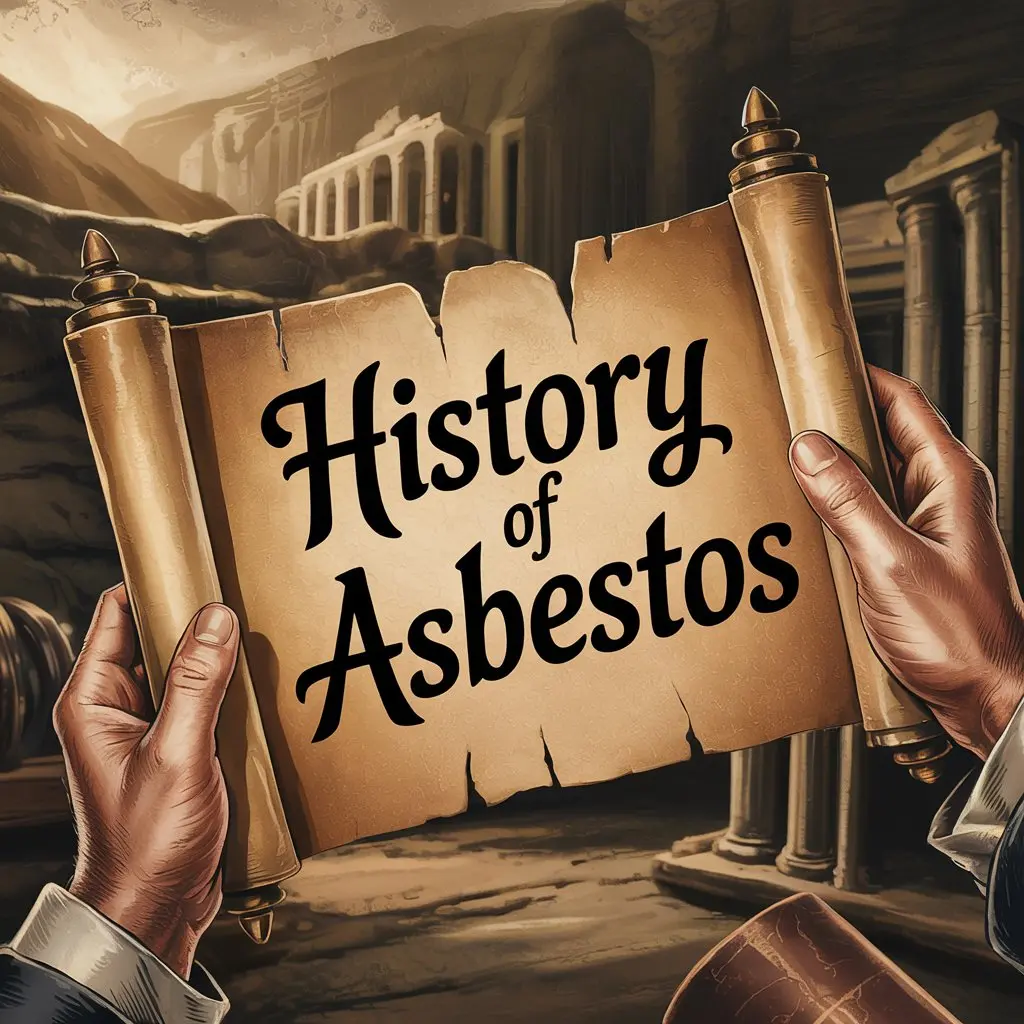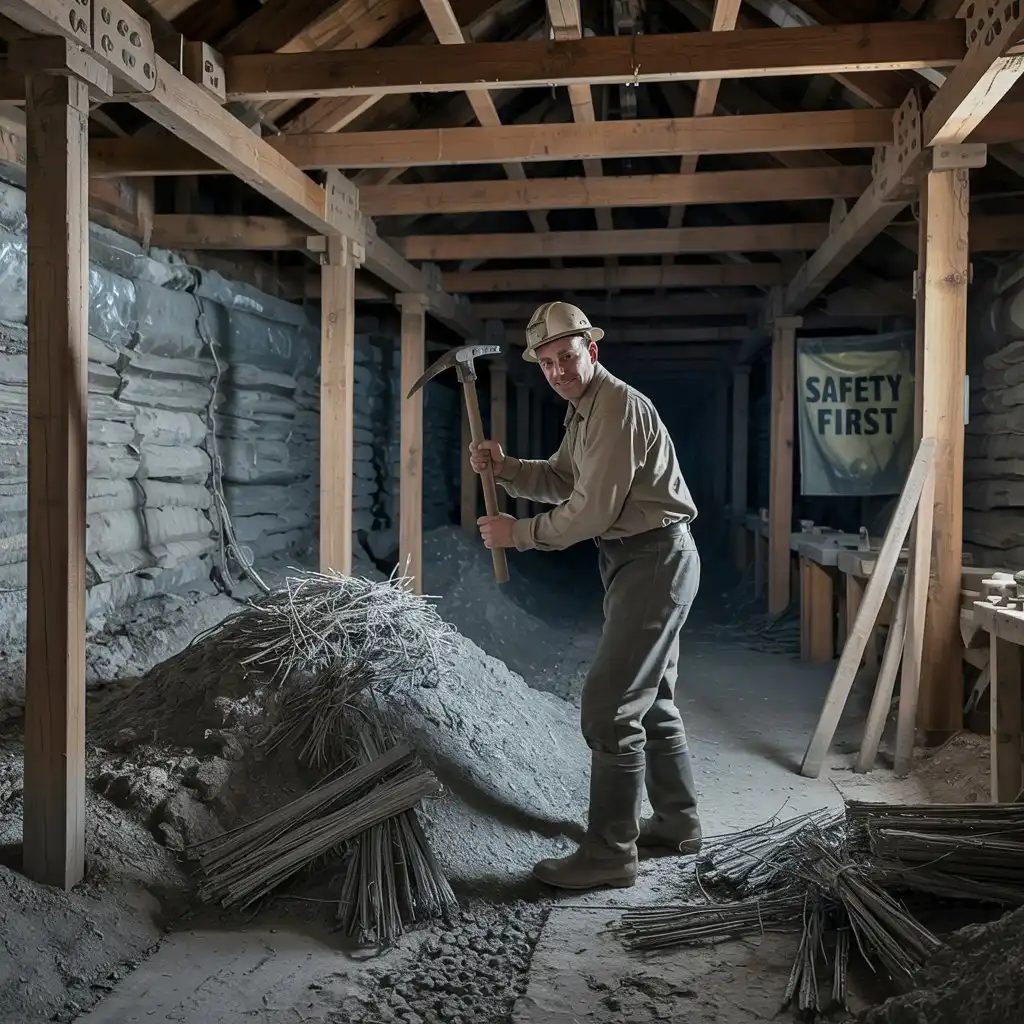Asbestos is a group of naturally occurring minerals made of thin, durable fibers resistant to heat, fire, and chemicals. People have used asbestos for thousands of years, but it wasn’t until the 20th century that its serious health risks became known. The history of asbestos is marked by early innovation, industrial growth, scientific discovery, and public health warnings.
What Is Asbestos?
Asbestos refers to six silicate minerals: chrysotile, amosite, crocidolite, tremolite, anthophyllite, and actinolite. These fibers are strong, flexible, and resistant to heat and corrosion. Due to these properties, asbestos became valuable in construction, shipbuilding, manufacturing, and many other industries.
Chrysotile, or “white asbestos,” is the most commonly used type and accounts for about 90% of asbestos in commercial products.
Early Use of Asbestos
Ancient Times
The use of asbestos dates back more than 4,000 years. Archaeological evidence from Finland shows that people mixed asbestos fibers into clay pots to increase their strength and heat resistance.
In ancient Greece, asbestos was used in wicks, funeral shrouds, and fireproof cloth. The Greeks observed its fire-resistant properties and named it “asbestos,” meaning “inextinguishable.” Historians like Pliny the Elder and Strabo described asbestos use and noted that miners exposed to the fibers often developed lung issues.
Roman Empire
Romans expanded asbestos use in fabrics, armor, and buildings. Wealthy Romans used asbestos tablecloths that were cleaned by throwing them into fire. The cloth emerged unharmed, reinforcing its fireproof reputation. There are records of Roman slaves who worked with asbestos developing lung diseases, indicating early recognition of health dangers.
Decline and Rediscovery
After the fall of the Roman Empire, asbestos use declined in Europe. During the Middle Ages, its use was rare and limited to royal or religious applications, such as fire-resistant cloths in cathedrals or relic preservation.
In the Renaissance, asbestos resurfaced in literature and trade but remained rare due to limited mining techniques and poor knowledge of the material.
Industrial Revolution and Mass Production

1800s: Start of Commercial Use
The Industrial Revolution in the 19th century triggered a major rise in asbestos use. As industries developed, the need for fireproof, durable, and insulating materials grew. Asbestos fit these needs perfectly.
In 1828, the first asbestos patent was issued in the U.S. for an insulation product. By the 1870s, asbestos mining had started in Canada and expanded rapidly. Manufacturers used asbestos in steam engines, boilers, turbines, and insulation.
1900s: Global Asbestos Boom
From 1900 to the mid-20th century, asbestos use increased worldwide. It became a standard material in:
- Construction: Cement, insulation, ceiling tiles, siding, floor tiles, joint compound.
- Shipbuilding: Insulating steam pipes, boilers, and engines.
- Automotive: Brake pads, clutches, gaskets, and hood liners.
- Textiles: Fireproof clothing, blankets, aprons, and protective gear.
Canada, South Africa, Russia, and Australia became leading asbestos producers. Mining towns flourished around this resource. Thousands of workers were directly exposed, and asbestos dust spread into homes and communities.
Recognition of Health Risks
Early Warnings
By the early 1900s, doctors noticed health problems among asbestos workers. In 1906, the first recorded asbestos-related death occurred in France. British doctors began reporting lung disease in textile workers exposed to asbestos.
Scientific Studies
- 1924: The death of a 33-year-old asbestos worker in the UK led to the first medical documentation of asbestosis.
- 1930s–1950s: Research linked asbestos exposure to asbestosis, a chronic lung disease caused by inhaling asbestos fibers.
- 1960: South African researchers confirmed the link between asbestos and mesothelioma, a rare cancer affecting the lung lining.
By the 1960s, medical experts recognized that asbestos could also cause lung cancer and pleural disease. Despite these findings, many industries continued using asbestos, often hiding or denying the risks.
Regulatory and Legal Changes
Government Response
- 1931 (UK): The first asbestos regulations were introduced to limit exposure in factories.
- 1970 (US): The Occupational Safety and Health Administration (OSHA) was created and set workplace exposure limits.
- 1976 (US): The Toxic Substances Control Act gave the EPA authority to regulate hazardous materials, including asbestos.
Bans and Restrictions
- 1989 (US): The Environmental Protection Agency attempted a full ban under the TSCA. However, a 1991 court ruling overturned much of the ban, though some uses were still restricted.
- 1999 (UK): The UK banned all types of asbestos.
- 2003 (Australia): Full ban on asbestos.
- 2005 (EU): The European Union banned the use, import, and export of asbestos.
Today, more than 60 countries have banned asbestos completely. However, some still permit limited use.
Continued Use and Ongoing Impact

Countries Still Using Asbestos
Despite health concerns, countries like Russia, China, India, Brazil (until 2017), and others continued or still continue to mine and use asbestos, especially in construction. Chrysotile is the most commonly used form due to its flexibility and affordability.
Asbestos in Existing Structures
Many buildings, especially those built before the 1980s, still contain asbestos materials. Schools, factories, homes, and public buildings may have asbestos in insulation, flooring, or roofing. If disturbed, these materials can release fibers into the air, creating health risks.
Occupational Exposure
Even with bans, millions of workers around the world still face asbestos exposure, particularly during renovation, demolition, or maintenance work. Asbestos-related diseases often take 20–50 years to develop, meaning new cases are still appearing from past exposure.
Asbestos-Related Diseases
- Asbestosis: Scarring of lung tissue that causes breathing problems.
- Mesothelioma: Aggressive cancer of the lining of the lungs or abdomen.
- Lung Cancer: Increased risk, especially for smokers.
- Pleural Plaques and Effusion: Thickening or fluid build-up around the lungs.
There is no safe level of asbestos exposure. Even short-term exposure can lead to health issues decades later.
Legal and Financial Consequences
Lawsuits related to asbestos have led to some of the largest legal settlements in history. Many companies filed for bankruptcy due to the volume of claims. Trust funds were created to compensate victims.
Asbestos litigation continues in many countries, especially in cases where workers were knowingly exposed without proper protection or warning.
Summary Timeline
| Year | Event |
|---|---|
| 4000 BCE | First known use of asbestos in pottery |
| Ancient Greece | Asbestos used in lamp wicks and fireproof cloth |
| 1800s | Industrial use increases during Industrial Revolution |
| 1906 | First recorded asbestos-related death |
| 1930s | Studies confirm link to lung disease |
| 1960 | Mesothelioma linked to asbestos |
| 1989 | US EPA attempts to ban asbestos |
| 1999–2005 | Full bans in UK, EU, and Australia |
Conclusion
The history of asbestos is a cautionary example of how industrial progress can bring hidden dangers. For centuries, asbestos was praised for its strength and fire resistance. But as medical research revealed its deadly effects, the global response shifted from use to regulation and, eventually, to bans.
Despite reduced use, the legacy of asbestos remains. Millions live and work in buildings that still contain asbestos. Continued awareness, strict safety measures, and effective regulations are necessary to prevent further harm.
Contact Us For more
Email: [email protected]
Phone Number: +937 252-4724
Address: 2617 S Smithville Rd, Dayton, Oh, United States

Dr. Chris Cameron is a leading asbestos expert with over two decades of experience in occupational and environmental health. He holds a Ph.D. in Environmental Science and has worked extensively with government agencies, private sector organizations, and health and safety regulators to assess, manage, and mitigate asbestos-related risks. Dr. Cameron is widely recognized for his research on asbestos exposure, remediation strategies, and public health policy